LiDAR Drone Scans are Changing Inspections

Enhancing Workplace Safety with LiDAR Drone Inspections
Confined space inspections are an important yet hazardous duty in industrial maintenance and asset management. Traditional methods involve inspection personnel physically entering hazardous locations, where they are exposed to toxic gasses, low oxygen levels, severe temperatures, and the rare but real threat of structural collapse. Thankfully, the way these inspections are carried out is changing due to developments in drone technology, especially with Light Detection and Ranging (LiDAR) drone units. Drones undertake all the dangerous hazards, such as navigating small places, unstable structures, and potentially poisonous, low-oxygen conditions, without putting inspection personnel in danger. LiDAR drone units are also able to finish inspections in a fraction of the time, which minimizes downtime.
A recent project by AeroVision is a prime example of the industrial efficiency of the future, demonstrating that LiDAR drones not only increase occupational health and safety but also offer better data collection methods and long-term asset management advantages.
Limitations of Traditional Inspections Without LiDAR Drones
The power utility client conducted confined space inspections using only inspection staff prior to incorporating AeroVisions drone technology. This traditional method required a large time and resource commitment. It usually required one to two days to plan and carry out a risk assessment, plus extra time for permissions.
Previously, the inspection protocol required an inspector to physically enter the confined space and manually capture photos of potential problem areas using a standard camera. While this method provided some visual documentation, it was limited in scope and detail. Inspectors were unable to collect comprehensive data, such as precise measurements or structural integrity insights, that could be valuable for future assessments. Additionally, the process posed significant occupational health and safety risks, as personnel had to navigate hazardous conditions without a complete understanding of the structure’s stability or potential hidden dangers.
How Drone LiDAR Services Improve Efficiency
The power utility client had a strict deadline for the inspection and came to AeroVision with a planned shutdown window of roughly two weeks, the perfect opportunity to perform an inspection of the power station structure. The client was only able to produce a crude schematic when asked for structural drawings. This ambiguity presented a serious risk because the process for inspection may be severely restricted if the drone did not fit or operate as intended.
This challenge is one that many asset managers frequently encounter. Often, the only reference materials available are the original drawings or photographs from when the industrial space was first built. While these resources may be reliable for the first few years—or even a decade—over time, they become less accurate as the structure undergoes wear, damage, and slight shifts in measurements due to continued use.
Additionally, physical documents can be lost, damaged, or become outdated, making it increasingly difficult to obtain precise and up-to-date information. This lack of accuracy can lead to inefficiencies, safety risks, and costly surprises during inspections or maintenance work.

AeroVision used the Flyability Elios 3 (E3) drone, which has LiDAR and high-resolution video capabilities to solve this problem. With three different flights totaling 21 minutes of flight time—roughly the same amount of time needed to unbolt the entry hatch—the job was finished in four hours total.
In order to create an initial LiDAR model of the structure, the first seven-minute flight was used as an exploratory scan. The second flight refined this model, while the third densified the data, producing a highly detailed, accurate point cloud of the environment.
The additional time includes transporting the equipment to the hatch, setting up the drone, and tearing down of the equipment. AeroVision created a smooth, thorough map of the structure by combining LiDAR drone data with videos and snapshots of points of interest using Inspector software.
Faster and Safer Results with LiDAR Mapping Drones
The advantages of the drone-based examination were evident immediately. There was no requirement for personnel to enter the restricted area because the LiDAR drone operation successfully found that no significant repair was necessary.
The power utility client received a vastly more complete dataset than would have been possible with traditional inspection methods, allowing for a thorough desktop review of conditions. In addition to improving decision-making, this data collection method greatly decreased the total amount of downtime needed for structural maintenance.
It was revolutionary to be able to collect a comprehensive, high-resolution dataset that could be analyzed by several stakeholders.

Digital map results of the LiDAR scan
The Future of Drone Surveying in Industrial Maintenance
This project has effects that go beyond a single inspection. Future flight operations can now be planned and carried out with little turnaround time thanks to the availability of a trustworthy LiDAR drone dataset. Now that the customer can conduct inspections more regularly, asset conditions can be regularly tracked without causing major downtime or endangering staff. Operational efficiency was further increased by the clients ability to close and reopen the industrial structure on the same day, enabling them to service their customers quicker than before.
The inspection supports the decision to prevent inspection personnel from entering the structure unnecessarily if no problems are discovered. If maintenance is required, inspection personnel can enter the restricted area with a well-defined, accurate, and pre-planned strategy, cutting down on exposure time and improving efficiency.
As AeroVision continues to advance its capabilities, the integration of LiDAR drones into industrial inspections is proving to be an indispensable tool for safety, efficiency, and precision. The future of confined space inspections is here—and it’s airborne.



